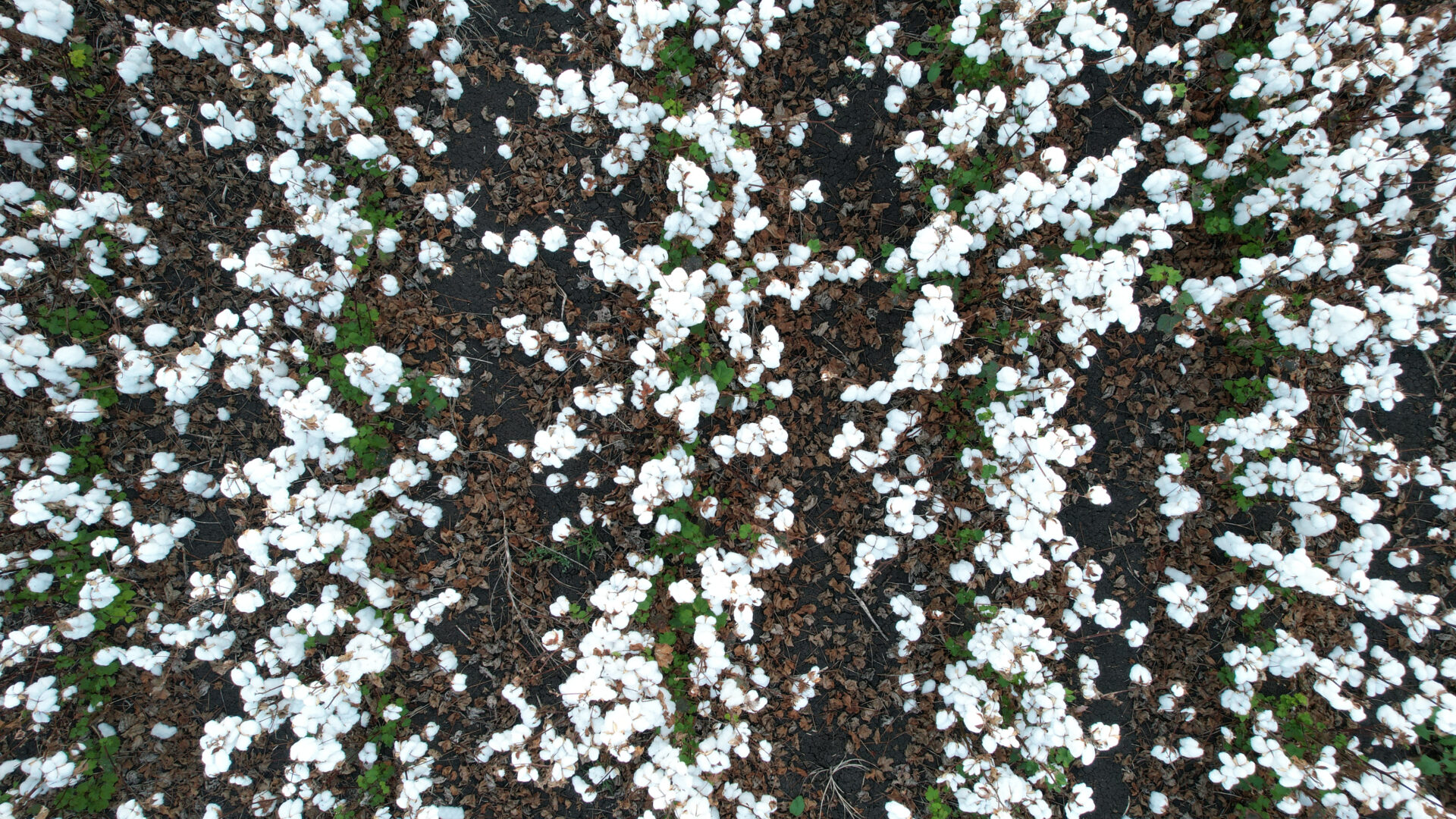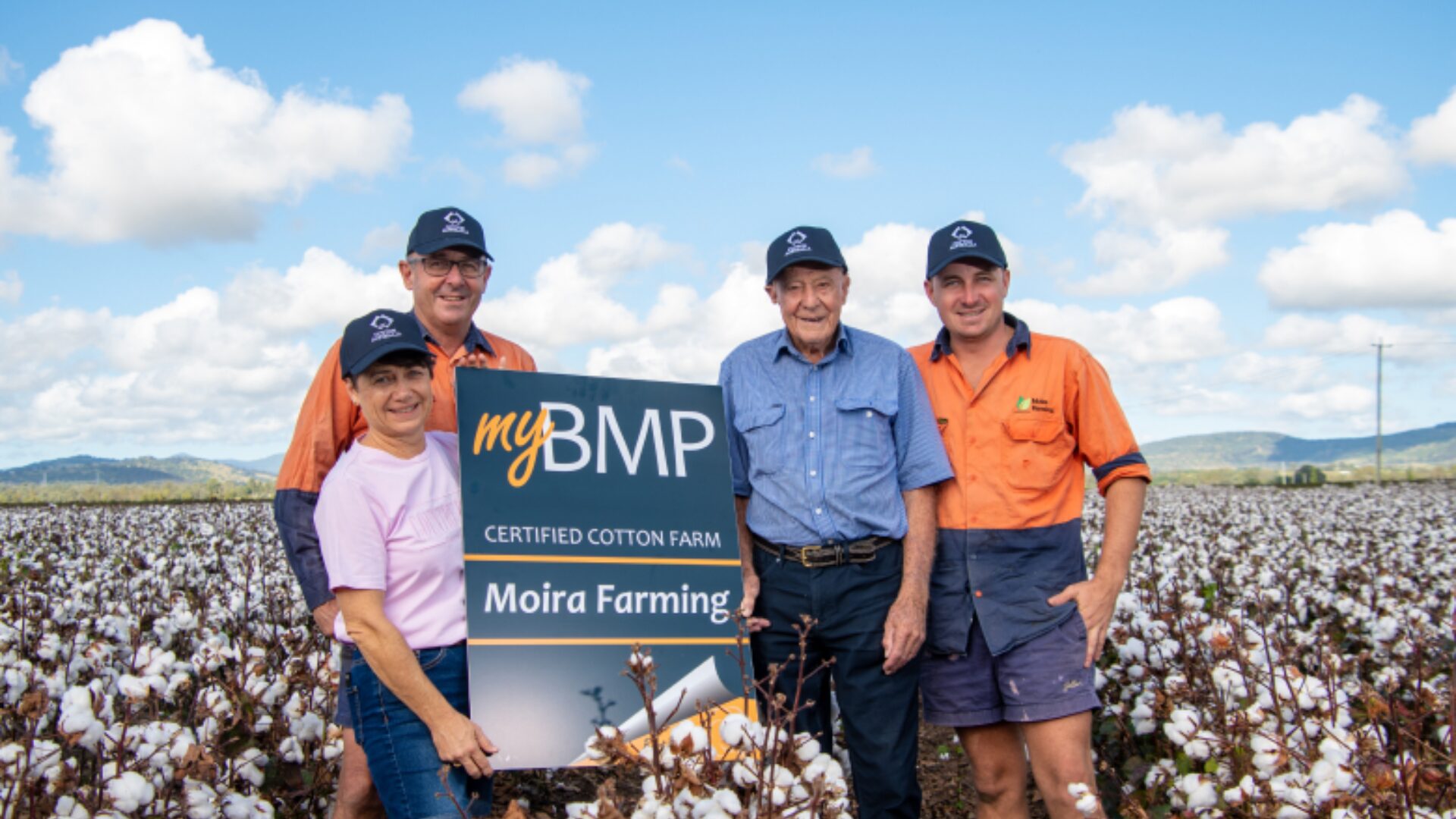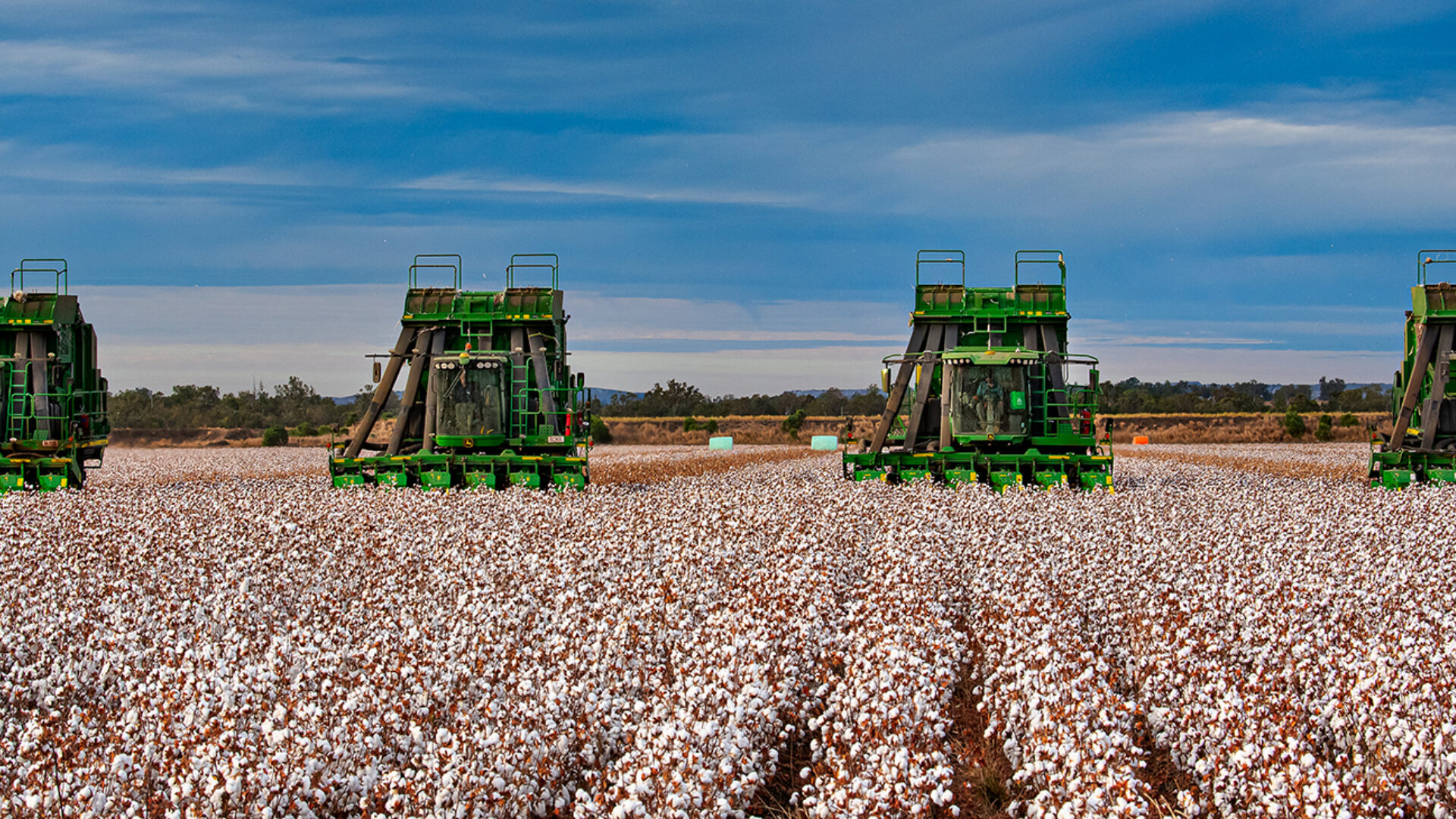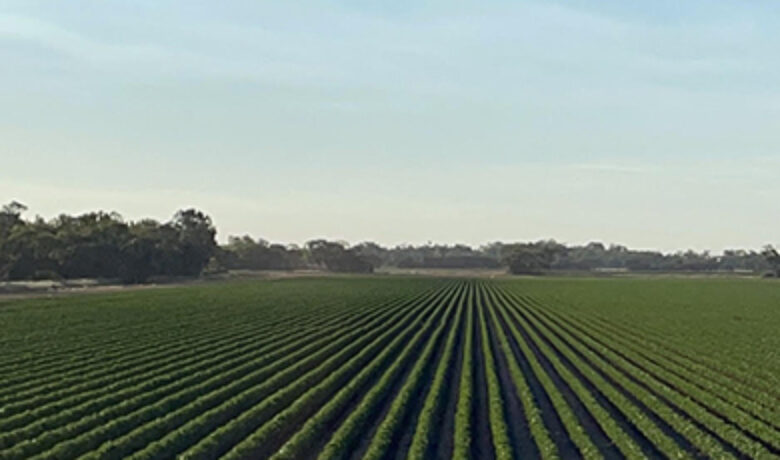The PLANET pillar of the PLANET. PEOPLE. PADDOCK. sustainability framework focuses on enhancing environmental performance across key areas crucial to cotton production. Our commitment to these areas aligns with the relevant Sustainable Development Goals (SDGs) and underpins our efforts to ensure a sustainable future for the Australian cotton industry.
PLANET.PEOPLE.PADDOCK

Enhancing environmental performance
PLANET
Water
Context
- Governments regulate sustainable water use limits. Basic needs of the environment and humans must be met before any water is allocated for irrigation
- Cotton is grown when water is available to farmers. The amount of water available for irrigation varies each year with the volume of water in rivers, dams and aquifers. Farmers choose what crop is best to grow with the water available to them
- Cotton is being grown with less water per bale.
Key facts
- From 1997 to 2022, the volume of water used to grow a bale of cotton reduced by up to 50 per cent
- Very dry and very wet seasons take more water to grow a crop than seasons without climatic extremes
- The rate of water efficiency improvements has slowed over time.
Soil
Context
- Soils are a national asset. Healthy soil is the starting point for productive agriculture
- Healthy soil is alive, full of microbial & macroinvertebrate life. Soil health is the capacity of soil to function as a living system
- Because soil is alive, improving soil health has two principles: give soil food and shelter. Australian cotton farmers use practices such as reduced tillage, controlled rotational crops, cover crops, retaining crop stubble, and optimising fertiliser application to improve their soil’s food and shelter. The right mix of practices depend on the unique geology and systems of every farm.
Key facts
In 2022:
- 98% of growers conserved crop residues
- 86% of growers used minimum tillage
- 56% of growers used cover cropping.
Biodiversity
Context
- Biodiversity is complex and varies dramatically across the landscape. Taking a “one-size-fits-all” approach to biodiversity does not work
- Our biodiversity priority is remnant native vegetation on cotton farms, and especially better measuring the area and condition of natural forests to meet the increasing demand for evidence of deforestation-free supply chains
- In the absence of a nationally consistent approach to define and measure biodiversity on farms, the Australian cotton industry has collaborated with the seven Natural Resource Management regions to define indicators and a method to measure woody vegetation (trees) on cotton farms
- Our approach is to collaborate with other industries and trusted environmental advisers on regionally appropriate actions for each farm. The actions of individual farmers will have much more impact if they are coordinated to contribute to identified regional priorities.
Key facts
- 21% of the total area of an average Australian cotton farm has remnant native vegetation (most of this is grazing land, and some is not cropped or normally grazed).
Mapping Woody Vegetation Factsheet
Greenhouse gas emissions
Context
- Growing and ginning cotton accounts for about 0.2 per cent of Australia’s GHGs. Most cotton emissions come from nitrogen fertiliser
- Vegetation on cotton farms naturally removes carbon dioxide from the atmosphere, and stores it as carbon in vegetation and soil
- The cotton industry aims to reduce net GHG emissions by reducing emissions and increasing carbon storage.
Key facts
- Relatively flat trend in emissions per bale from 2016 to 2022. The industry has developed an emissions reduction research strategy to guide efforts to further reduce emissions.
Pesticides
Context
- Pesticides are one tool used to control pests within cotton growers’ Integrated Pest Management (IPM) pest control toolbox. All pesticides in Australia are approved by a government regulator, and are safe to use as directed by the label
- Growers are using more and a greater range of herbicides to control weeds and manage resistance (caused by farmers using less tillage) and less insecticides (the result of GM cotton and IPM)
- The environmental risk of pesticides has reduced.
Key facts
- Between 1998 and 2023, the 5-year average in herbicide volume per ha increased by 44% and insecticide use decreased by 96%
- The 5-year average hazard of insecticides & herbicides reduced by 91 and 60 per cent respectively from 2004 to 2023.
Cotton farms are complex systems where most things are interconnected: changing one part in the system impacts other parts of the system. Find out more.
PEOPLE

Enhancing farm workplaces
The PEOPLE pillar of PLANET. PEOPLE. PADDOCK is comprised of a single ‘Workplace’ topic. ‘Workplace’ brings together commonly accepted human rights and social sustainability areas including health, safety and wellbeing, and training and education. We have drawn on recent industry research to guide our strategic thinking on what cotton farm workplaces depend on, and what impacts those dependencies.
Workplace
Context
High-performing farm businesses depend on people.
- We aim to keep cotton growers and core employees
- We aim to attract casual and contract employees when they are needed
- We aim to keep everyone safe and appropriately skilled.
At the request of the Australian Agriculture Sustainability Framework, the Australian cotton industry has worked with experts, researchers and other stakeholders to determine indicators to measure these. The discussion paper resulting from this work aims to accelerate harmonisation of indicators, and coordinate data collection across industries.
Key facts
- 52% of cotton growers and ginners have post-school qualifications
- 28% of cotton growers and ginners are female
- Average of 47 serious injuries per year in the five years to 2023.
Workplace agriculture sustainability indicator harmonisation
PADDOCK

Improving productivity and economic contribution
The PADDOCK pillar of the PLANET. PEOPLE. PADDOCK. sustainability framework focuses on improving productivity and economic contribution within the cotton industry. This pillar recognises the importance of:
- sustainable intensification (maximising productivity within environmental and social sustainability boundaries) to global growth.
- the economic contribution productive, profitable cotton farms make to Australia and to regions in particular.
Productivity
Context
- A growing world population needs farm productivity to increase, so more food and fibre is produced per hectare
- Productivity increases must be sustainable. PLANET. PEOPLE. PADDOCK aims to reduce negative impacts and increase positive impacts on people and nature – while growing more cotton with fewer inputs.
- Efficient use of irrigation water, within sustainable river system withdrawal limits, allows for sustainable intensification. This is in line with the Global Biodiversity Framework’s target of an increase in sustainable intensification.
Key facts
- 54% increase in irrigated yield (5-year average 1994-2023)
- 11% increase in dryland yield (5-year average 1994-2023)
$14 million invested in cotton R&D in 2022/23.
Economic Contribution
Context
- Cotton generates billions of dollars for Australia every year. In the last five years, gross value of production has averaged $2.2 billion
- Cotton is an important part of rural communities. Revenues generated by the Australian cotton industry make a big contribution to rural economies in particular
- Economic contribution depends on profitability. Profitable cotton growers can re-invest in their farm businesses and support their local community. Irrigated cotton has a much higher return on assets than other crops, which provides greater whole-farm resilience and ability to manage through poorer seasons.
Key facts
- $3.7 billion gross value of production in 2022/23
- 80 per cent of business expenses spent locally
- 7,222 estimated direct FTE employees in 2021/22


